- 15.04.2021.
- Dario Jerković
Traditional boats of Dalmatia
"Navigare necesse est, vivere non est!" Surely you've seen this old Latin phrase in some marketing campaign, or as a moto of some yacht club. Short and sweet, it lures you in the state of mind...winds in your sails, waves flashing while the sun caresses your skin... Nevertheless, the origins of this phrase weren't so rosy as you would think. Pompey, one of the famous Roman generals, roared it to his sailors in a dire moment for them and probably all of the Roman people. Ships full of grain that would save food storages in Rome, as well as the political peace, stalled in a port as the sailors got terrified by the storm. Pompey senses the situation and yells: "It is necessary to sail, living is not necessary"! A kind of paradox statement, but a powerful one. Going out into tempest is a risky business in many ways, but not delivering through sailing, or fishing, was an ultimate risk.
70% of the Earth is covered with water. Therefore, it is only natural for people to take advantage of it. It keeps us alive either by providing the necessary liquid to drink, animals which we hunt for food, or serves as a surface for our boats. Lack of roads on the remaining 30% led to the naval power development of every maritime state, city-states, and likes in history as the best way to gain an advantage over the rivals. Fast and reliable vessels were always in high regard in naval combat, big and stable ones best for the sea trade, as well as the small fishing boats, crucial to maintain the people happy and boost the economy with fish, pearls, and other sea riches. We live to sail, and we used to sail to live. It is and it was necessary to sail, especially if it was your only option.
As well as many of the major Mediterranean civilizations throughout history, Croatia, as a small kingdom on the banks of the Adriatic Sea, has always been closely connected to sea goods. Way before the Slavic people crossed the mountains to come to the sea, Illyrians and Romans inhabited the strip of land along the Adriatic, harvesting it and spreading their cultural influence. Later on, Croats adopted some of these cultures and continued the tradition of seafaring, enhancing it even. Among war and agriculture, only cultivation and exploitation of the Adriatic and its sea routes remained for Croats to hop on the success train throughout the ages. Constantly torn between more powerful states, Croatia played a significant role in the history of this area thanks to the ingenuity and hard labor of its people. Living by the sea and of the sea, they constantly developed themselves and everything around them to survive and succeed in the harsh world. Sailing and fishing were of the highest importance, and to sail and fish you had to make proper boats. Many of those survived to this day and make a proud collection as one of the most prominent pieces of Croatian cultural heritage.
 Not only did the Croatian seamen build and enhanced boats, but they also made many inventions that made life on the sea and off the sea more simple and efficient. Many of them were manifested on the boat's design and new types, but probably the biggest invention of a Croat in this area was the making of "Power Block" or "Puretic Power Block". It was a revolutionary invention of Mario Puretić, Brač born, who moved to the USA in 1938 and became a fisherman. A winch that enhanced the extraction of nets on fishing boats as it tripled the catch with three times fewer crew members involved in comparison to the manual extraction. The United States Patent and Trademark Office proclaimed him as "the inventor of the year for his merits in the progress of science and useful skills" in 1975.
Not only did the Croatian seamen build and enhanced boats, but they also made many inventions that made life on the sea and off the sea more simple and efficient. Many of them were manifested on the boat's design and new types, but probably the biggest invention of a Croat in this area was the making of "Power Block" or "Puretic Power Block". It was a revolutionary invention of Mario Puretić, Brač born, who moved to the USA in 1938 and became a fisherman. A winch that enhanced the extraction of nets on fishing boats as it tripled the catch with three times fewer crew members involved in comparison to the manual extraction. The United States Patent and Trademark Office proclaimed him as "the inventor of the year for his merits in the progress of science and useful skills" in 1975.
Boats have always been an important element of everyday life on the Croatian coast. Even today, despite the modern vessels taking primate, in many ports on the Adriatic one can find wooden boats that were, and some still are, a source of food, but nowadays as well serve for leisure. Each region on the Adriatic had some specifics in the construction of these boats. Certain types of boats would be adapted to the local terrain configuration and the purpose that the boat had. With the development of technology, constant social changes, and a new way of life on the coast, boats and their use changed accordingly as an important element of Dalmatian everyday life. These changes were the embodiment of local knowledge which was passed down from generation to generation. That knowledge, accumulated over hundreds of years is preserved in the material form of traditional vessels, their similarities, and differences.
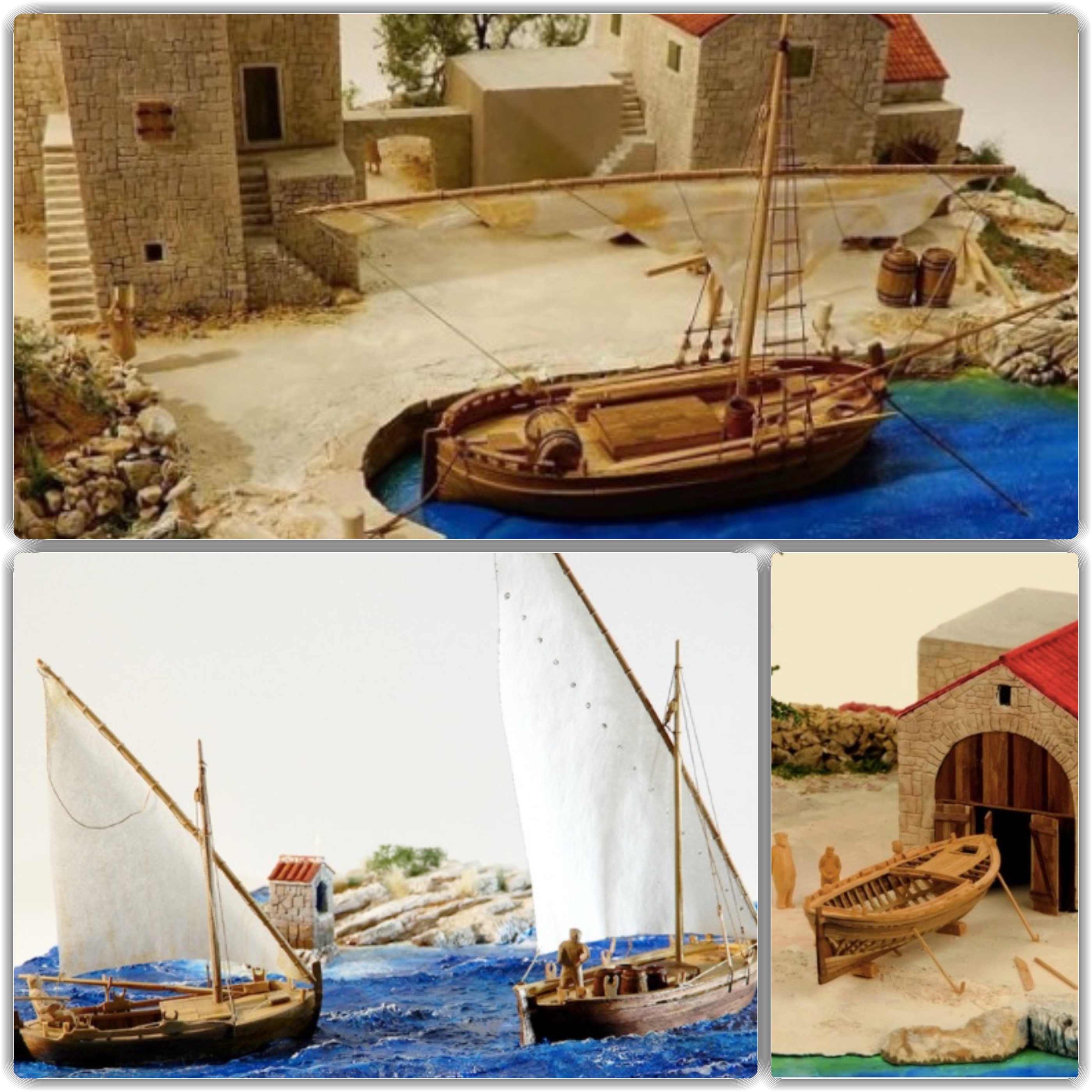
These differences generate a wide range of types and subtypes of boats, which differ in size and superior design, details that make them different or similar to each other, but also connect them in a way that only wooden sailing objects can. This connection is depicted not only in the differentiating details of their construction, different ways of making the same boat from bay to bay but more in the beauty of naming the same boat different within the same bay in some cases.
Sagena, batana, guc, leut, gajeta, trabakul, pelig, pasara, condura, plazulja, batela, barka, bracera, falkuša, lađa, trupa, kaić, and many more...all names for, in general, very similar types of boats that served, and still do, as a primal tool in agriculture, fishing, and animal farming. To even try to explain all of them would lead to the author's mental health degradation and many, many claims from fellow Dalmatians out of every village on the Adriatic. That being said, our primary goal is to explain some of these types of boats, the pride of our nation and region.
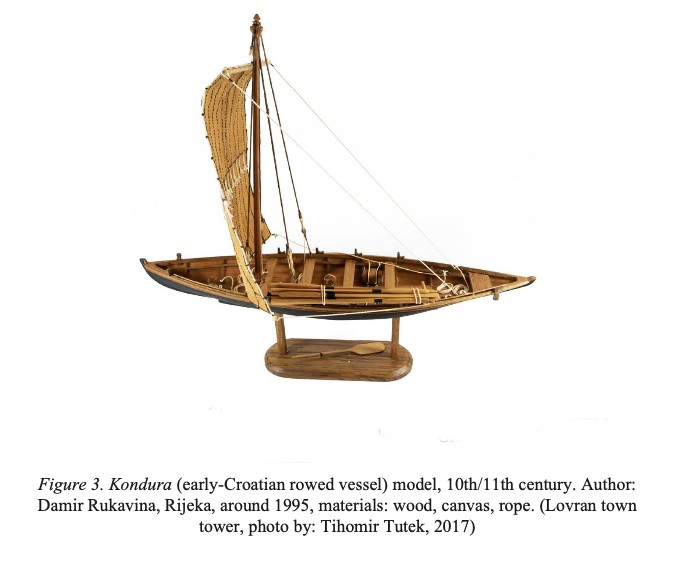 CONDURA CROATICA is a name for a small war and merchant sailing ship on the Adriatic during the early medieval Croatian state. It seems to have appeared in the 10th century, mentioned in Byzantine emperor Constantine VII. Porphyrogenitus work "De administrando imperio" (On the management of the empire) as part of the navy of the first Croatian king Tomislav. 7-8 m long boat, narrow, built classically, with the ribs and paneling of the boat's starboard connected with wooden and iron nails, and the side rudder - the oar (the real stern rudder was not yet known on ships at that time) were the main characteristics of condura. A square sail would be used most of the time, but they were also used as fast rowing boats. 8 to 12 rowers were deployed on the condura, as one could not depend solely on the wind during war raids...losing wind would mean losing your life too. Finding one well-preserved condura under the mud of a bay in Nin had done wonders in understanding how they were built and used.
CONDURA CROATICA is a name for a small war and merchant sailing ship on the Adriatic during the early medieval Croatian state. It seems to have appeared in the 10th century, mentioned in Byzantine emperor Constantine VII. Porphyrogenitus work "De administrando imperio" (On the management of the empire) as part of the navy of the first Croatian king Tomislav. 7-8 m long boat, narrow, built classically, with the ribs and paneling of the boat's starboard connected with wooden and iron nails, and the side rudder - the oar (the real stern rudder was not yet known on ships at that time) were the main characteristics of condura. A square sail would be used most of the time, but they were also used as fast rowing boats. 8 to 12 rowers were deployed on the condura, as one could not depend solely on the wind during war raids...losing wind would mean losing your life too. Finding one well-preserved condura under the mud of a bay in Nin had done wonders in understanding how they were built and used.
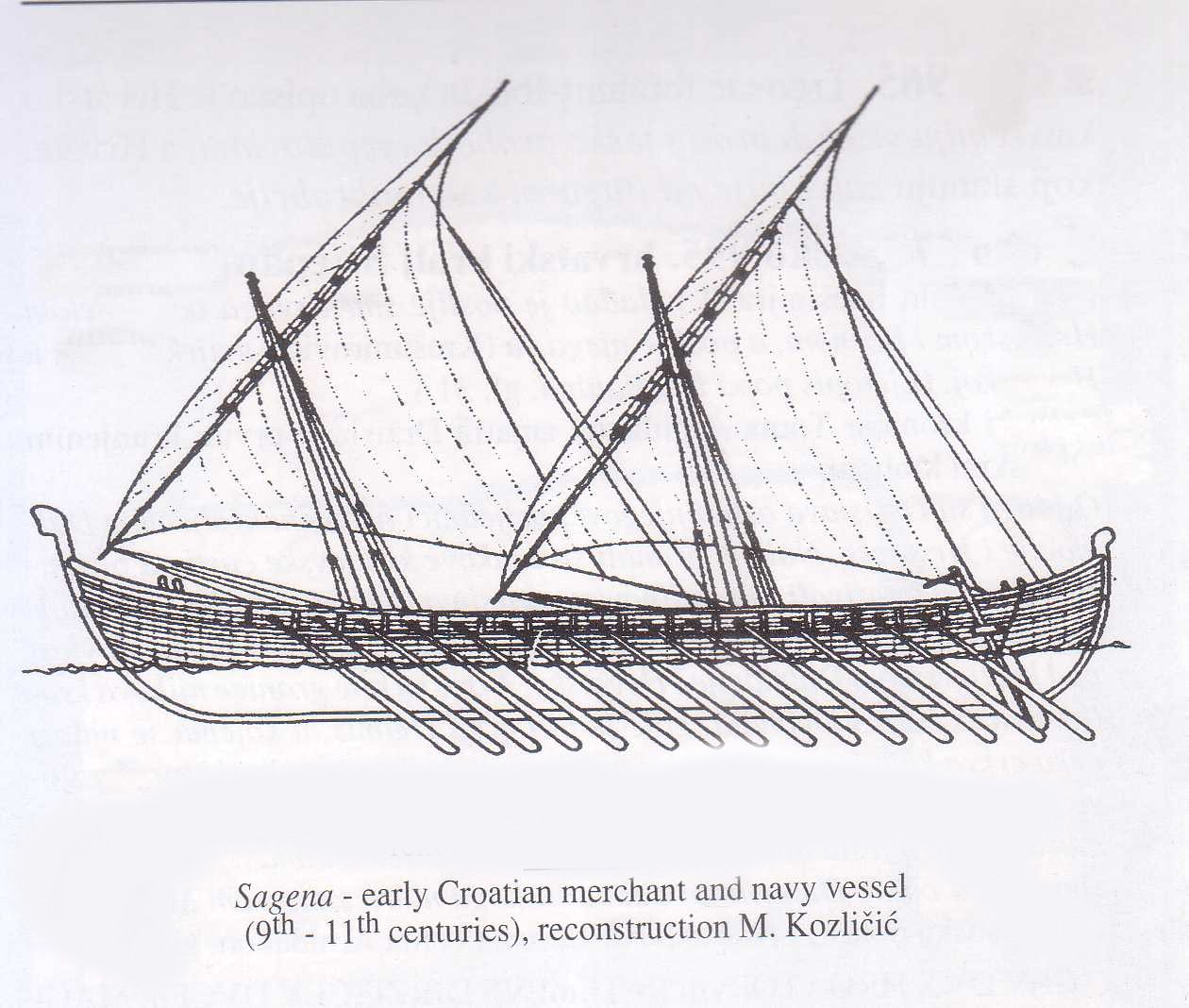 SAGENA or SAGITTA was an early medieval ship larger than condura. It had up to 40 men and was equipped with up to 15 pairs of oars, and one or two masts carrying sails. An average of 30 crew members on the 20m long and 4m wide sagena had a draft of one meter. Even though defined mainly as merchant ships, not warships, sagena and condura were fast, mobile vessels perfect for raiding slower boats.
SAGENA or SAGITTA was an early medieval ship larger than condura. It had up to 40 men and was equipped with up to 15 pairs of oars, and one or two masts carrying sails. An average of 30 crew members on the 20m long and 4m wide sagena had a draft of one meter. Even though defined mainly as merchant ships, not warships, sagena and condura were fast, mobile vessels perfect for raiding slower boats.
GAJETA could be described as a mother or a benchmark of all these types of boats on the Croatian Adriatic. On average seven meters long, two meters wide, and with a draft of 0.5 m, this boat was a heavenly gift for the men, women, and children navigating the Adriatic around the scattered islands and rocks. Precisely that, this boat has been designed, altered, and enhanced to fit into the specific needs of each part of the coast, and yet to be easy to navigate by children as well, and to be able to cover longer distances, often across the open sea. In short, the gajeta was to be the sum of all the requirements of this complicated geographical, proprietary, social, and navigational structure. She had to represent several ships in one. Move graciously through the island channels and bays of Korčula, Brač, Hvar, speed up to Kornati estates of the families from Betina on Murter, or even lend more speed and safety to the famous seamen from Komiža on Vis. Their case is probably most well-known in the gajeta's saga. Having made the 42 nautical miles long journey from Vis to the most distant Croatian island of Palagruža, rich in fish, they needed their gajetas to be steady even on rough seas and loaded with fish. What their boat masters did was to design two removable wooden side strakes called "falke", which added half a meter that changed everything in terms of safety while navigating, and could be lifted out while catching fish. This invention got the gajeta from Vis a nickname "falkuša", one of the many subtypes of this beautiful life-changing boat. It could be as far as 9m long, 2.5m wide, with a Latin sail and jib area of 90 m²! All of that could produce a speed of 11 knots! That allowed the fishermen of Komiža to race to the best spots on Palagruža. Read more here!
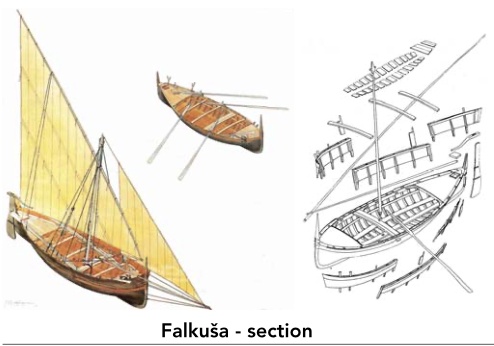
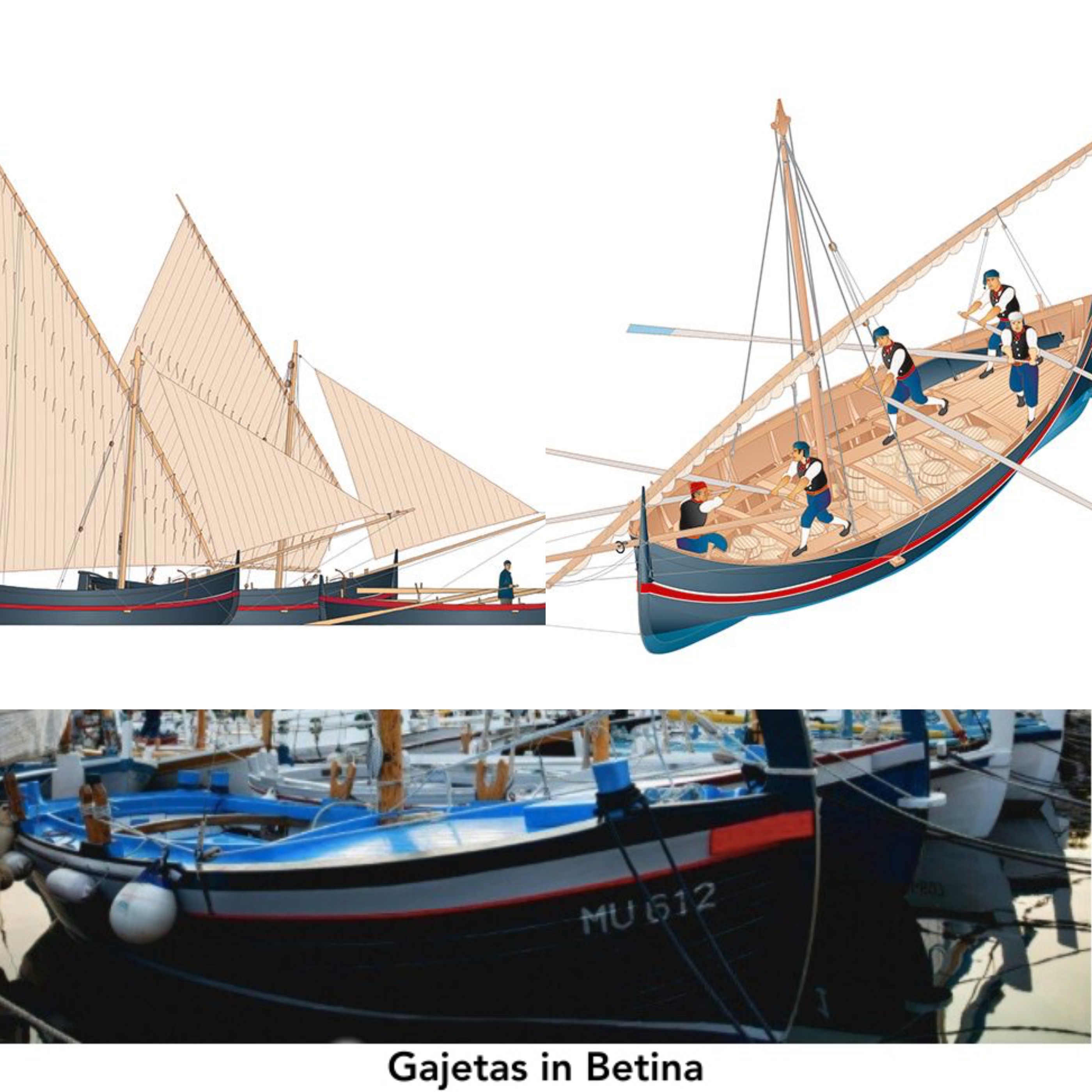
BRACERA was a central Dalmatian cargo coastal sailing ship of the 19th and 20th centuries, even though the first mentioning of it dates even back to the 16th century. The outline is very similar to gajeta, with round bottom and sides, so it is generally looked upon as a subtype of gajeta, only bigger. Larger braceras could be as long as 15-17 meters and could load 50-70 tons of cargo. Smaller and more often ones were 7-12 meters long and able to carry 10-40 tons. It is spread along the entire eastern Adriatic coast, and its origin is probably related to the island of Brač. Adding to the aforementioned fact of adapting the boats to regional needs, there were acknowledged subtypes of bracera from Dalmatia, Istria, Piran, Koper, and Kotor. Larger braceras are 15-17 meters long and can load 50-70 tons, and smaller 7-12 meters for 10-40 tons.
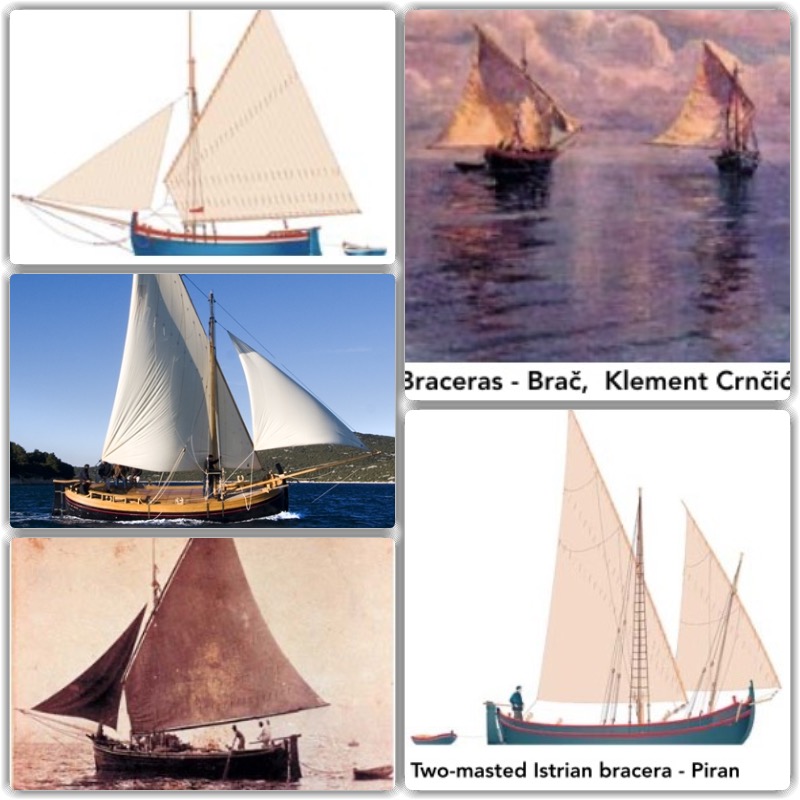
LEUT, the largest traditional fishing boat or small boat of the eastern Adriatic. 8 - 15 m long, with a carrying capacity of 8‒10 t, it was intended for professional fishing and cargo transportation. As well similar to gajeta, only longer and fuller in form, it was less maneuverable but had a greater bearing capacity. Leut had a Latin sail and one can distinguish it from other similar ships in that it has a jump-up 1.2 m long on the bow.
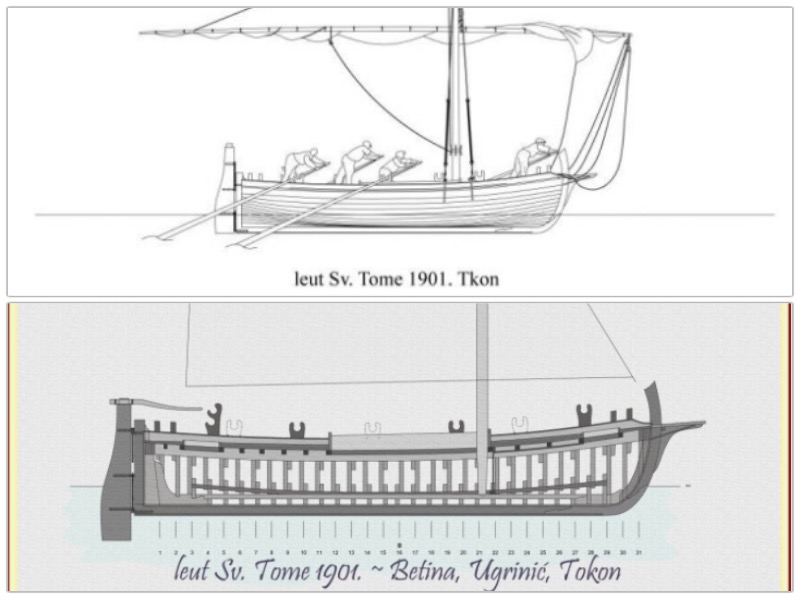
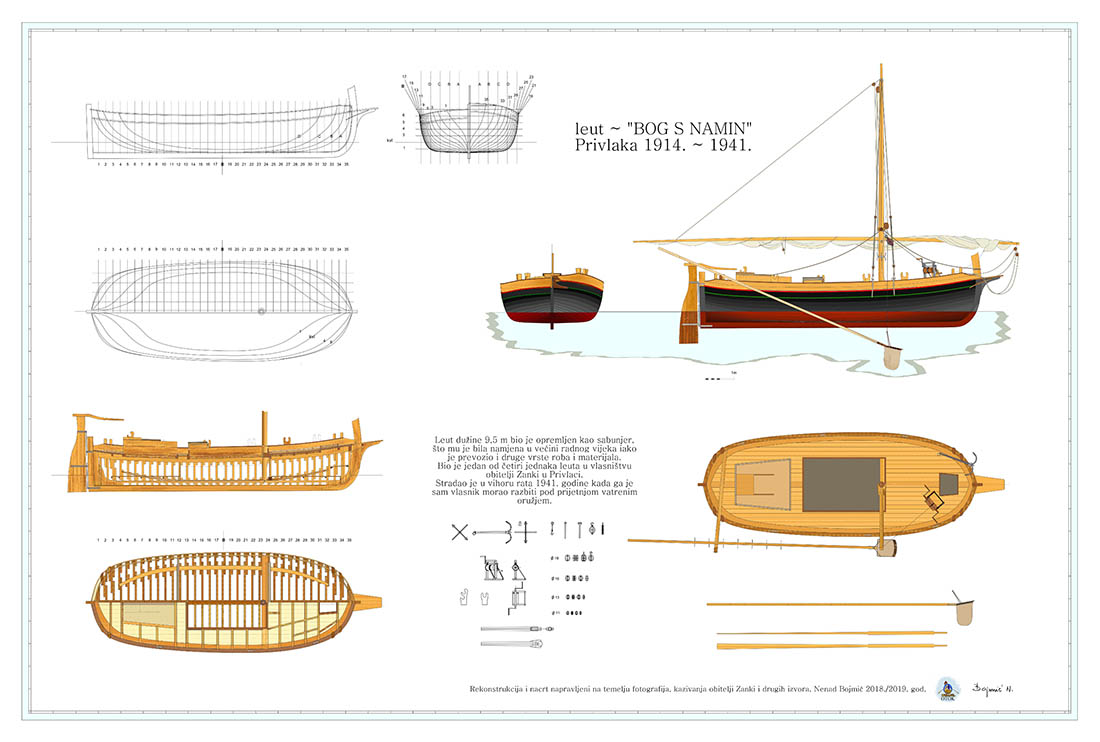
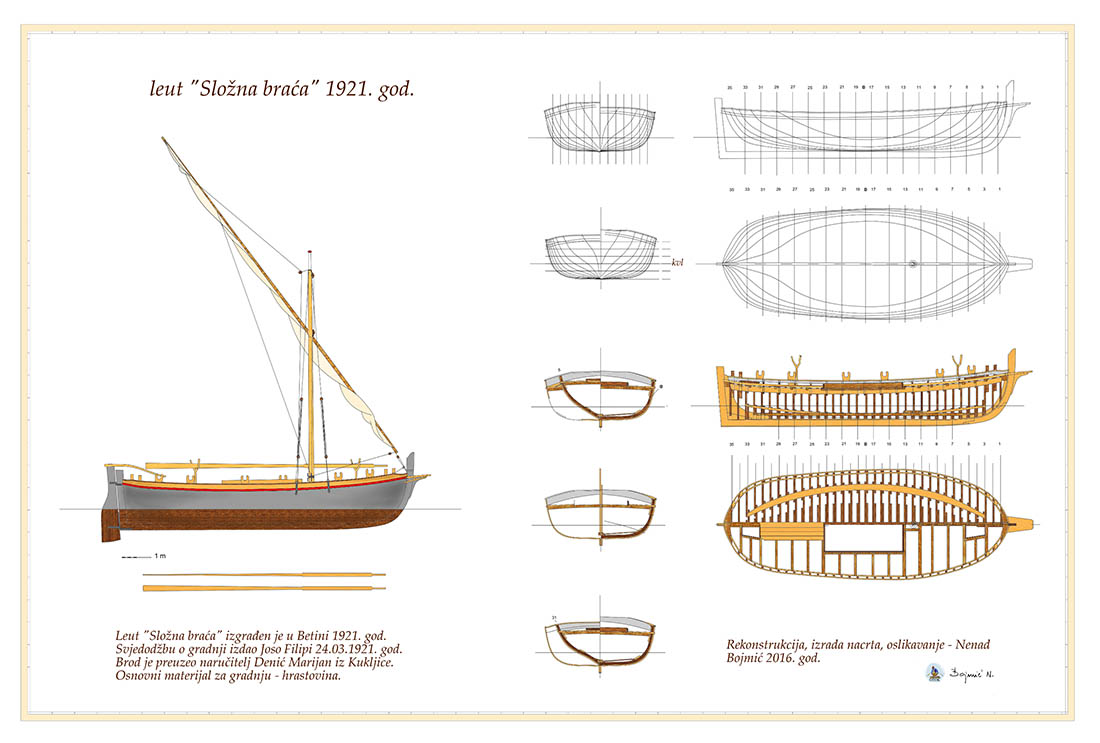
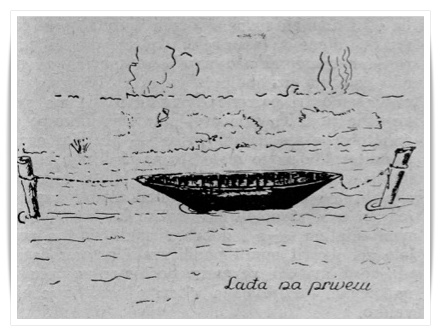 LAĐA was for hundreds of years, all the way to the 1970s, a basic transportation vehicle in the Neretva valley. It was used for a variety of purposes; for the transport of animals, agricultural products, grass, fertilizer, hay, straw, sand, wood, served for transporting furniture, people, for funerals. weddings, eel hunting. Even nowadays you can see lađa gliding across the Neretva with two passengers on it, a man and a cow. It could carry from 30 to 35 people and large loads between 2.5 and 3.5 tons. Apart from everyday use in Neretva, the cargo was transferred by boat to Pelješac, Hvar, Makarska, and other nearby surroundings at sea, but only during the calm sea because of its flat shape and large sides. It used to have a small sail on the mast in the middle, but mainly the oars were used, or it was simply towed from the shore. This technique was called "lancanje" and was mainly done by women. Today, it is best preserved by annual Ladja Marathon, 22km race from Metković to Ploče, where rowers and helmsman compete in teams (usually formed of members living in the same village, but outside Neretva valley as well).
LAĐA was for hundreds of years, all the way to the 1970s, a basic transportation vehicle in the Neretva valley. It was used for a variety of purposes; for the transport of animals, agricultural products, grass, fertilizer, hay, straw, sand, wood, served for transporting furniture, people, for funerals. weddings, eel hunting. Even nowadays you can see lađa gliding across the Neretva with two passengers on it, a man and a cow. It could carry from 30 to 35 people and large loads between 2.5 and 3.5 tons. Apart from everyday use in Neretva, the cargo was transferred by boat to Pelješac, Hvar, Makarska, and other nearby surroundings at sea, but only during the calm sea because of its flat shape and large sides. It used to have a small sail on the mast in the middle, but mainly the oars were used, or it was simply towed from the shore. This technique was called "lancanje" and was mainly done by women. Today, it is best preserved by annual Ladja Marathon, 22km race from Metković to Ploče, where rowers and helmsman compete in teams (usually formed of members living in the same village, but outside Neretva valley as well).
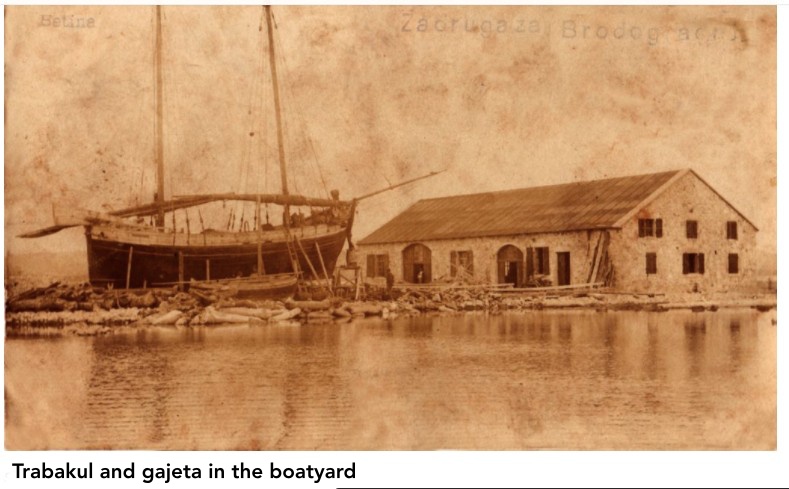 TRABAKUL was a two-masted traditional coastal sailing ship for the transport of people and goods. Stocky in shape, 14–30 m long, 3.5–6 m wide, 1.5–2.5 m high, and with a load capacity of 40–200 t, it had four to eight crew members. As already mentioned boats, when needed for deeper seas and more difficult sailing conditions along the eastern Adriatic coast, would have had moderately rounded bottoms and bends with a moderate draft, while for sailing in shallower waters and bays of the northern Adriatic, it would have almost flat bottoms and rounded sides, with a sudden transition from bottom to sides. Used from the 18th century, it was one of the most important cargo ships on the Adriatic, even after the sails were replaced by an engine. Nowadays, those still in good shape are being transformed into motorsailers used in nautical tourism and cultural heritage preservation initiatives. As it didn't have oars, trabakul also towed a smaller auxiliary boat KAIĆ, which was lifted next to the ship and used to tow it when there was no wind. These small boats are legendary in Dalmatia and beyond, and you can still see them in every port and village on the coast. Used for fishing and transportation, they were considered, as gajeta, as a family member rather than a vehicle.
TRABAKUL was a two-masted traditional coastal sailing ship for the transport of people and goods. Stocky in shape, 14–30 m long, 3.5–6 m wide, 1.5–2.5 m high, and with a load capacity of 40–200 t, it had four to eight crew members. As already mentioned boats, when needed for deeper seas and more difficult sailing conditions along the eastern Adriatic coast, would have had moderately rounded bottoms and bends with a moderate draft, while for sailing in shallower waters and bays of the northern Adriatic, it would have almost flat bottoms and rounded sides, with a sudden transition from bottom to sides. Used from the 18th century, it was one of the most important cargo ships on the Adriatic, even after the sails were replaced by an engine. Nowadays, those still in good shape are being transformed into motorsailers used in nautical tourism and cultural heritage preservation initiatives. As it didn't have oars, trabakul also towed a smaller auxiliary boat KAIĆ, which was lifted next to the ship and used to tow it when there was no wind. These small boats are legendary in Dalmatia and beyond, and you can still see them in every port and village on the coast. Used for fishing and transportation, they were considered, as gajeta, as a family member rather than a vehicle.
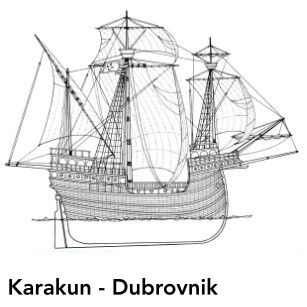 KARAKA, a large three-masted cargo sailing ship with a round hull and a raised bow and stern. It was designed similar to a caravel but bigger and thus was slower and less maneuverable. It appeared at the beginning of the 14th century in Venice and Dubrovnik. During the 15th century, it spread through the Mediterranean and from there to the Netherlands. The 16th century Dubrovnik karaka was 38‒40 m long, 14‒15 m wide, had a draft of 5 m, load capacity 950‒1250 t. It had up to 40 defensive cannons and up to 100 crew members. It had a revolutionary heart-shaped hull, more suitable for navigation across the Atlantic, adopted by European ships only a century later. The 16th-century KARAKUN made by Dubrovnik shipbuilders was the largest and most prestigious merchant ship in the world at that time. It was 50‒55 m long, 16‒17 m wide, a draft of 6‒7 m, and a load capacity of 1580‒2050 t. His bow mast was higher than in the karaka, and in addition to the main one, he also had a top cross sail. William Shakespeare testifies of this magnificent ship in his works The Taming Of The Shrew and the Merchant of Venice, calling it argosy (a name derived from the older form of the name for Dubrovnik). Trade and diplomacy were key to success and these ships were what made the famous Republic of Dubrovnik competitive and strong amid the major powers of that period, Ottoman Empire and Venice.
KARAKA, a large three-masted cargo sailing ship with a round hull and a raised bow and stern. It was designed similar to a caravel but bigger and thus was slower and less maneuverable. It appeared at the beginning of the 14th century in Venice and Dubrovnik. During the 15th century, it spread through the Mediterranean and from there to the Netherlands. The 16th century Dubrovnik karaka was 38‒40 m long, 14‒15 m wide, had a draft of 5 m, load capacity 950‒1250 t. It had up to 40 defensive cannons and up to 100 crew members. It had a revolutionary heart-shaped hull, more suitable for navigation across the Atlantic, adopted by European ships only a century later. The 16th-century KARAKUN made by Dubrovnik shipbuilders was the largest and most prestigious merchant ship in the world at that time. It was 50‒55 m long, 16‒17 m wide, a draft of 6‒7 m, and a load capacity of 1580‒2050 t. His bow mast was higher than in the karaka, and in addition to the main one, he also had a top cross sail. William Shakespeare testifies of this magnificent ship in his works The Taming Of The Shrew and the Merchant of Venice, calling it argosy (a name derived from the older form of the name for Dubrovnik). Trade and diplomacy were key to success and these ships were what made the famous Republic of Dubrovnik competitive and strong amid the major powers of that period, Ottoman Empire and Venice.
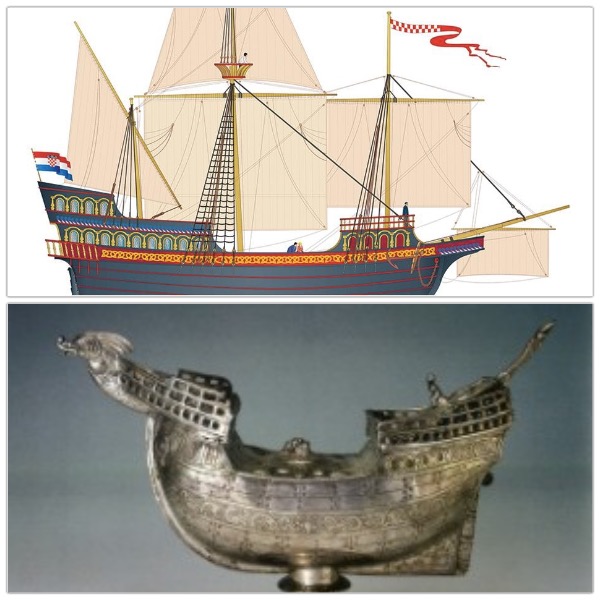
The tradition of shipbuilding in Croatia is long and rich. Scattered islands, narrow coast, historical and social events naturally pushed Croats and Dalmatian towards the sea. To be able to reach the islands, cultivate the land, and catch fish on the open sea, they had to build quality boats. The diversity of the boats, the enhancements, and the details that distinguish the boats in the subtypes from bay to bay is something extraordinary and worth preserving. The effects that led to creating such beautiful boats, social changes, and time itself, have also led to them being overrun by discovering new technologies in shipbuilding and constant speed-up of human life. No more can someone spend years in building one boat out of wood, a boat that will last centuries and become a family member in itself. No more will there be tales of the great journeys across the Adriatic to find fish that will feed the families of a fishermen's town. No more will we see the sight of hundreds of Latin sails coming home, sailors singing in joy and thankful to the sea which has given them everything they need for life. That life is becoming more and more fragile, fleeting, without the meaning it used to have for people. Once, it was more simple, you could say. Hard time, but a quality time. Time of gajeta, bracera and trabakul, a time when the people lived by the sea and off the sea.
THE ISLANDERS BALAD
We live off the sea, nets, and knots,
Counting blisters from oars, picks.
Eyes red from the night and tears,
Calloused hands hard as rock.
Beaten by storms and rain,
Every day hunched over more and more,
Yet more than anything and all the beauties,
All our life we love the sea!
Our blue sea, You know all our wishes!
You are strength, happiness!
Our whole life.
Counting all the sails, white boats,
Days go by with the winds.
Scanty soil gives what it can,
Life on the island is a joy and sorrow.
Beaten by storms and rain,
Every day hunched over more and more,
Yet more than anything and all the beauties,
All our life we love the sea!
Our blue sea,
You know all our wishes!
You are strength, happiness!
Our whole life.
Dario Jerković

 Mljet">
Mljet">
















 mini_290.webp)













